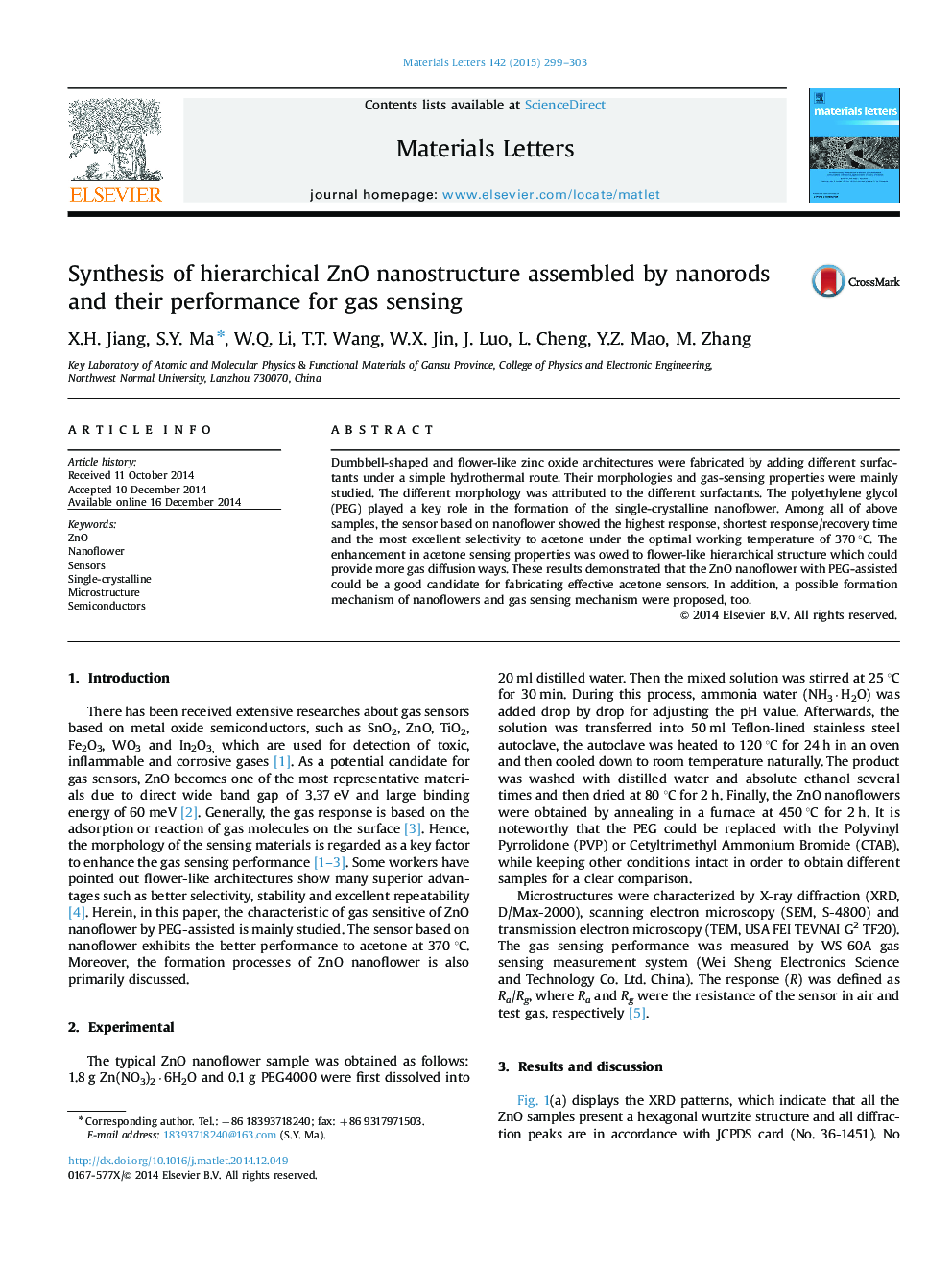| Article ID | Journal | Published Year | Pages | File Type |
|---|---|---|---|---|
| 1643335 | Materials Letters | 2015 | 5 Pages |
•We used a simple hydrothermal route have fabricated different morphology’ ZnO.•The polyethylene glycol (PEG) played a key role in the formation of the single-crystalline nanoflower.•The ZnO nanoflower with PEG-assisted could be a good candidate for fabricating effective acetone sensors.
Dumbbell-shaped and flower-like zinc oxide architectures were fabricated by adding different surfactants under a simple hydrothermal route. Their morphologies and gas-sensing properties were mainly studied. The different morphology was attributed to the different surfactants. The polyethylene glycol (PEG) played a key role in the formation of the single-crystalline nanoflower. Among all of above samples, the sensor based on nanoflower showed the highest response, shortest response/recovery time and the most excellent selectivity to acetone under the optimal working temperature of 370 °C. The enhancement in acetone sensing properties was owed to flower-like hierarchical structure which could provide more gas diffusion ways. These results demonstrated that the ZnO nanoflower with PEG-assisted could be a good candidate for fabricating effective acetone sensors. In addition, a possible formation mechanism of nanoflowers and gas sensing mechanism were proposed, too.
